In ERB-APA #39 my 1872 chronology revealed Tarzan arrived in Baltimore, Maryland on August 14, 1893. That is also the very day Robert Canler drives up in a car at the Porter's Wisconsin farm. After finding the Porter's Baltimore home the jungle lord discovered Jane and her father had recently moved to northern Wisconsin, and that Robert Canler was on the way to marry her. On August 22, 1893, Tarzan arrives at the Porter's Wisconsin farm driving a French car.
I know that many times we have read in the ERB zines that Tarzan and Robert Canler could not have been driving cars in an 1872 chronology. That is not true, however. What is true is that Robert Canler could not have driven a car exactly as described in Tarzan Of The Apes by Edgar Rice Burroughs the author from Chicago, Il. described Robert Canler's car as a purring six-cylinder. The first six-cylinder motor produced was a Napier and it was built in London and Boston from 1906 through 1909. Since Robert Canler was in Wisconsin on August 22,1893 a six-cylinder was an impossibility.
 |
| 1908 Cadillac |
As stated, many times before, it is my personal opinion, that the Tarzan story occurred sixteen years earlier than Edgar Rice Burroughs, the author, described, (Known in Tarzan chronology as "The Pushback Theory."). This was done purposely to protect the Greystoke family's true identities. Naturally, if one moves the events backward sixteen years one would have to eject modernization. Although Robert Canler was definitely driving a car, it was not a six-cylinder.
April 4, 1892 Duryea
What kind of car were Tarzan and Robert Canler driving on August 22, 1893? Actually, both autos could have been one of several brands. By 1897 the last of the scheduled steam coaches had disappeared in England, but people had begun to build steam cars. Some carry up to eight passengers and are of varying designs. Steam fire engines appeared in America by 1863 and steam buggies by 1867.
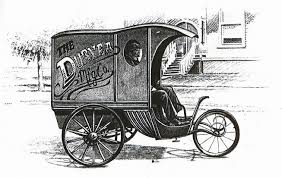 |
| September 1893 Durya |
By 1873 in France, the company of Amedee Bollee was producing steam carriages for private owners at Le Mans. In the 1880s the first steam race took place in Paris, France on a course from Saint James to the bridge over the Seine at Neuilly. The second race was on a twelve-mile course between Neuilly and Versailles. Both were won by pioneer steamer Georges Bouton. By the 1890s in England, France, and Germany steam vehicles of various kinds were in production.
 |
| 1873 Obeisance |
From this presented research we now know that it is possible that Tarzan could have been driving a French steamer, and Robert Canler most likely an English steamer, in an 1872 chronology. Let's not stop researching here though.
 |
| 1890 Peugeot |
After Alphonse Beau de Rochas, a Frenchman proposed a compression engine, N.A.Otto, a German, built one in Germany in 1867. Later improvements by Otto and by Gottlieb Daimler, also a German, were made to the compression engine. Daimler patented the first light internal combustion engine in 1883. Karl Benz, also a German, completed his first tricycle in 1865, and on January 29, 1886, Benz Patent DRP 37435 paved the way for the motor vehicle as a complete unit. Daimler quickly followed with his first vehicle which was also patented in 1886.
Daimler Steam Motorcycle
Karl Benz's first car was at the Paris Exhibition of 1887 and began to attract French sales. The car was called the Roger-Benz. This is also the year Daimler's French agent, Edward Sarazin, persuaded the Paris company of Panhard et Levassor to make their German engines. When Sarazin died in 1887 his widow, Louise, kept on with his work. The widow visited Daimler in Constant and brought back one of his new engines as a pattern. Both Benz and Daimler had autos at the Paris Exhibition of 1889. Daimler produced his twenty-cylinder engine and in the following year a four-cylinder.
1886 Benz Patent Motorwagon
Although Robert Canler could have very well driven the Roger Benz or a Daimler auto, they could not have been the maker of Tarzan's car. Although both autos fit the time period perfectly, they are German-made. Edgar Rice Burroughs, the author, clearly states in both Tarzan Of The Apes and The Return Of Tarzan that the ape-man is driving a French car.
1890 Peugeot
Armand Peugeot built the first French car in 1889, and his name is still around today on a major French make. The family had various businesses on the fringe of engineering and Peugeot first built a steam tricycle in collaboration with steam pioneer Leon Serpollet, then turned to the Daimler engine being sold in France by Emile Levassor. Peugeot's first petrol car came in1890 with its engine at the rear. By the end of 1891, five cars had already been sold.
1890 Peugeot Type 2
A Peugeot is my first brand pick of the steam motorcar Tarzan was driving in Wisconsin. It was a French car, and it existed in the time period described. Since it was the first French-made car it would also probably be the most obtainable. My second pick would be a Panhard steam motorcar. They appeared in the Steam version in 1891. It is possible that Tarzan could have driven a Panhard in Wisconsin, but if you study the marketplace where each brand was intended a Peugeot steam motorcar is the best bet.
1893 Peugeot Vis-a-Vis
In August 1888, William Steinway, owner of the Steinway and Son's piano factory in New York, talked to Daimler about US manufacturing rights and signed a contract on September 9, 1888. Daimler Motor Company was founded on Steinway Avenue, Long Island, New York. Thus, before any US markets had begun production, in 1891 the Steinway company issued illustrated brochures on gas and petrol engines for tramway cars, carriages, quadricycles, fire engines, boats, and industrial purposes being offered by the German parent Daimler-Motoren-Gesellschaft. The first US engines were made under license in 1891 at Hartford, Connecticut. By all practicability, if Robert Canler was driving a gas-powered car, instead of steam or electric, it would be an imported Daimler from the Steinway's.
1891 Steinway & Sons Dailmer
The first US car manufacturer was Frank Duryea. Note this says manufacturer, for there were several car builders at this time. In 1892 Duryea began building an engine designed by the Pope Cycle Company, of Hartford, Connecticut, to fit into an existing horse buggy, but it was a financial failure.
1893 Duryea
Duryea lost his backer Erwin F, Markham, but made the second car on his own. In the US Duryea's first gas-powered motorcar took to American public streets on September 21, 1893, in Springfield, Massachusetts. In September 1895 he formed the Duryea Motor Wagon Company, which was also based in Springfield, Massachusetts. He adopted the Benz engine and formed a British company to sell cars in the UK. This true-life historical info proves that both Tarzan and Robert Canler were driving steam motorcars in August 1893 during their Wisconsin travels which occurs before the Duryea September event.
1893 Duryea
Elwood Haynes is credited for producing his first automobile in 1894. If true, Haynes' auto was produced a year too late for Tarzan and Robert Canler to own in Wisconsin. But an old company advertisement claims The Haynes-Apperson Company of Kokomo, Indiana was the oldest US auto company and produced autos in 1893. If this claim were true Robert Canler possibly could have been driving one of Haynes' earliest autos. Very unlikely, however.
 |
| Henry Ford |
Henry Ford built and displayed his first car in 1893, but production did not begin until a short time later.
1893 Ford
Although both Robert Canler and Tarzan left Baltimore, Maryland, and traveled to northern Wisconsin it's very improbable the two actually drove their cars there. The biggest clue is the amount of time required to accomplish such a drive. Americans depended on their railways for long-distance travel. Outside of towns and cities, paved roads were rare.
 |
| 1893 Empire State Express |
The early motorists had to struggle through dust and sand in the summer, floods, and axle-deep mud in the winter. Cars were built with the standard 4-ft 8-in track to fit the ruts created by farm wagons. There were few mileposts or signposts. No filing stations. In all probability, Robert Canler and Tarzan only drove their cars from the train station to the Porter farm.
John Bull Locomotive 1893 Chicago World's Fair
Some of Steinway's Daimler gas-powered cars were shown at the Columbia Exhibition in 1893 in Chicago, Illinois. There was an electric lighting vehicle fitted with a 10-hp engine, three small 2-hp cars, a 2.5-hp, a 6-hp fire pump, a motorboat with a 10-hp engine, and 2-hp and 3-hp Daimler engines. In June 1893 William Steinway wrote to Daimler about the sensational success of these first vehicles in America, pressing him to visit Chicago to demonstrate his cars and explain their construction. Robert Canler was most probably driving one of Steinway's steam cars during his Wisconsin visit.
1893 Daimler Benz Victoria
There was another interesting aspect of the 1893 World's Columbian Exposition. Edgar Rice Burroughs, father owned the American Battery Company on South Clinton Street in Chicago. It so happens the American Battery Company staged an exhibition at the fair and supplied batteries for electric automobiles. It was Ed Burroughs', and his brother's, job to drive a nine-seater electric car around the fairgrounds. You can see Edgar Rice Burroughs' ticket dated September 16 in Edgar Rice Burroughs, The Man Who Created Tarzan by Irwin Porges, page 77 in the soft edition.
1890 Morrison Sturgis Electric
According to my 1872 chronology, ERB-APA #39, Tarzan Of The Apes ends on the evening of August 22, 1893. At its close, we discover the Porter party at the railway station in northern Wisconsin waiting for the train to return to Baltimore, Maryland. Tarzan is there also, and he receives the cablegram revealing that he is Lord Greystoke. The Return Of Tarzan in a chronology opens at the exact time and date but in chapter twelve, not chapter one. Here we have the train engine coming into sight and William Clayton discovering the jungle lord's discarded cablegram.
Menomonee Falls, Wisconsin
The broken-hearted ape-man could not bear riding the train with Jane and William Clayton so at the very last minute he said, "You may tell the others of my decision to drive my car on to New York -." ERB-The Return Of Tarzan. We also know that after New York the ape-man plans to return to France because of Jane's statement to Clayton. "No," she replied; "at the last minute he was determined to drive his machine back to New York. He is anxious to see more of America than is possible from a car window. He is returning to France, you know." ERB-The Return Of Tarzan.
The next time we hear of the ape-man is in chapter one of The Return Of Tarzan. The jungle lord is three days cut of New York on board a French ocean liner bound for France. The grey-eyed giant meets new friends Raoul and Olga de Coude and rivals Nickolas Rokoff and Alexis Paulvitch. Edgar Rice Burroughs, the author, also informs us in two different passages that Tarzan is twenty-two when these events occur.
J. Allen St. John
"Tarzan's thoughts drifted from the past to the future. He tried to look forward with pleasurable sensations to his return to the jungle of his birth and boyhood; the cruel, fierce jungle in which he had spent twenty of his twenty-two years." ERB-The Return Of Tarzan.
Joe Jusko
Once they are in France the jungle lord becomes a regular visitor of the de Coude's and once more Edgar Rice Burroughs, the author, supplies us with the ape-man's age. "Twenty is shy in exchanging confidences with forty. Tarzan was but two years her senior." ERB-The Return Of Tarzan.
J. Allen St. John
Using Edgar Rice Burroughs, the authors, provided information we know Tarzan is twenty years old when he leaves northern Wisconsin on August 22, 1893. We also know that Tarzan was twenty-two when he was on board the steamer bound for France. Since Tarzan was born on September 1 the earliest the boating events could have occurred would be September 1, 1894. This is a passage of one year. Quite a long time to drive from Wisconsin to New York even in those days.
J. Allen St. John
Exactly what occurred in that one-year Tarzan spent in the US is left unsaid by Edgar Rice Burroughs, the author. Anything proposed would be mere speculation. Although it would be unofficial, I think it would be fun to speculate on the events of Tarzan's US adventure.
1893 World's Fair Columbian Exposition Chicago
Let's go back to discussing cars for a second. As I have shown above it was possible for both Tarzan and Robert Canler to have driven steam motorcars in an 1872 chronology. But let's face it folks, in 1893 motorcars were just not something you see on a daily basis. They were a spectacle. So, how could Tarzan and Robert Canler both have steam motorcars if they were so rare? In those days cars were only owned by either the investor or the very rich. That explains how Robert Canler got one, but how about Tarzan?
1893 Daimler Benz Victoria
Tarzan's car no doubt came through Paul d'Arnot. While still at the Greystoke cabin in Africa, the subject of money came up. "No, my friend," returned D'Arnot, "you need not worry about money, nor need you work for it. I have enough money, for two - enough for twenty. Much more than is good for one man and you shall have all you need if ever we reach civilization." ERB-Tarzan Of The Apes.
Joe Kubert
It is obvious Paul d'Arnot did not obtain this much money from being in the French Navy. Since the navy occupied most of Paul d'Arnot's time it is also obvious he did not work for it either. Therefore, it is obvious Paul d'Arnot's wealth was inherited. It was Paul d'Arnot's money that bought Tarzan's first French steam motorcar.
Zdenek Burian
The Germans took the early lead in compression-engine cars. The motors for the Daimler cars were even manufactured by Panhard et Levassor of Paris after 1887. The first French car was the Peugeot built in 1889. Right after the Peugeot came to the 1891 Panhard which was a steam car produced by Panhard et Levassor of Paris,
1891 Panhard ET Lavassor P2C
The next thing we need to discuss is the location of the Porter farm in Wisconsin, Edgar Rice Burroughs, the author, numerous times in Tarzan Of The Apes states "northern Wisconsin." The author from Chicago again states it in The Return Of Tarzan. Phil Farmer in Tarzan Alive theorizes that Jane's mother's farm was in Milton's Junction just outside of Janesville. I never could agree with this. Edgar Rice Burroughs, the author, says repeatedly "northern Wisconsin. Janesville is just about as south as you get in Wisconsin.
Tarzan Alive
I have always thought Jane's mother's farm was just outside of North Green Bay. Although not that far north, Green Bay is the last large northern town in 1893 Wisconsin. We know there was a train station near Jane's farm and we also know the farm was most probably located near a populated area. The reason I say this is because of what Robert Canler said. "We can have the ceremony at once, Jane," said Canler. "Then you and I can catch the midnight train to town." ERB-Tarzan Of The Apes. My reasoning is that only a more metropolis area would have a midnight service. Therefore, it is doubtful the Porter farm was much further north than Green Bay. (Someone please give input on this).
1893 Green Bay, Wisconsin
The ape-man left the railway station on the evening of August 22, 1893. Common logic would dictate that Tarzan would have remained in town for the night since it was already evening. Poor lighting and bad roads mean no driving autos at night. The jungle lord would have rented a room for the night and made arrangements for supper and a bath. He would have turned in early, resting for the auto adventure ahead.
1893 Green Bay, Wisconsin
On August 23, 1893, Tarzan left Green Bay on his way to New York. Over the coming days, the ape-man made his way to Manitowoc, on to Sheboygan, on to Milwaukee then on to Chicago. The jungle lord's Chicago arrival date was mid-September 1893. The weather in Wisconsin can be chilly in the morning and cool at night during this time of the year. Logic dictates Tarzan did not begin driving until the sun had things somewhat warm and stopped before dusk. Keep in mind the jungle lord is from Portuguese Angola in Africa and the coolness would definitely play a factor in his traveling plans. Tarzan's 1893 Peugeot Type 8 probably traveled five to ten miles an hour depending on road conditions.
1893 Chicago World's Fair
In Chicago repairs and services were made to the ape-man's car. Can you imagine the challenge when there were no such things as auto shops? Perhaps a battery was needed. The jungle lord made his way to the American Battery Company on South Clinton Street. The company serviced the electric cars at the Exhibition. While there, M. Jean C. Tarzan through chance, met the owner's teenage son, Ed Burroughs, the future author of the Tarzan series and more. M. Jean C. Tarzan and Ed met again at the World's Columbian Exhibition grounds. Young Ed, and sometimes his brother, drove one of the nine-seater electric cars around the fairgrounds advertising their father's batteries.
 |
| American Battery Company |
M. Jean C, Tarzan, and Ed could have very well had an adventure together on or around September 16, 1893. This is the date on Ed's World's Columbian Exposition ticket shown in Irwin Porge's Edgar Rice Burroughs: The Man Who Created Tarzan on page 77 in the soft edition. That adventure was Ed helping M. Jean C. Tarzan track down a serial killer, Herman Mudgett, aka Dr. Henry H. Holmes who murdered in Chicago during the 1893 World's Columbian Exposition. The serial killer lured victims, including a number of fairgoers to a three-story building, later dubbed the "Murder Castle," where they were tortured, mutilated, and killed
1893 Murder Castle
America's first serial killer H. H. Holme's heinous crimes weren't discovered until after the fair ended on October 30, 1894. Law enforcement believed that H. H. Holmes was responsible for dozens of deaths in Chicago, and may have killed as many as two hundred people around the nation.
1894 Dr. Henry H, Holmes
This first contact with M. Jean C. Tarzan at the 1893 World's Columbian Exposition may have led to Ed checking out the library books in 1907. When John Carter's great nephew relayed Greystoke's story to Edgar Rice Burroughs, the author, in 1910 or 1911 the Chicago native knew the story was the truth. Ed had met M. Jean C. Tarzan himself. To protect the Greystoke family's true identity Edgar Rice Burroughs, the author, and John Carter's great nephew decided to move the dates forward sixteen years in their The All-Story publication of Tarzan Of The Apes which was published in October 1912.
Clinton Pletee
After the World's Columbian Exposition, the jungle lord would have left Chicago and made his way to Toledo, on to Cleveland. From there most likely to Pittsburg, then Harrisburg, then Newark, then New York. Remember, outside the towns and cities paved roads were rare. Early motorists had to face dust and sand in the summer, floods, and axle-deep mud in the winter. There were very few mileposts or signposts, and no filling stations. Logic dictates that the visiting ape-man would have stuck to the main avenues.
1893 Worlds Columbian Exposition Chicago
Upon arriving in New York City Tarzan would have taken in the sights now that he was in no hurry. One of those sights would have been the recently constructed Brooklyn Bridge that opened in 1883. People from all over came to see it. The Brooklyn Bridge towers were stupendous. Naturally, the ape-man must have had some kind of adventure on it before leaving New York. From New York, chapter one of The Return Of Tarzan begins three days out into the sea and the jungle lord is now twenty-two and going by the name M. Jean C. Tarzan.
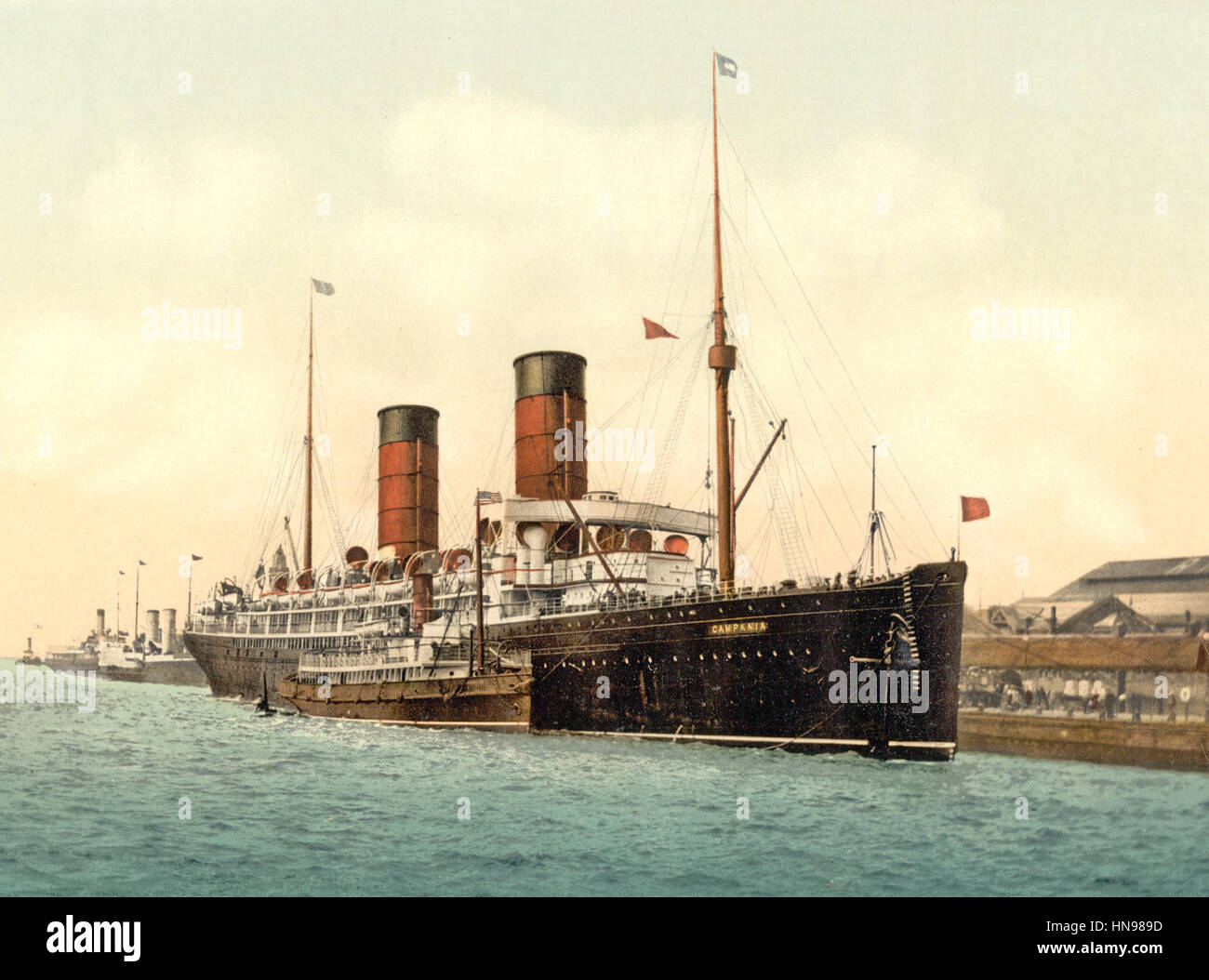 |
| 1893 RMS CAMPANIA Cunard Line Transatlantic Passager Ship |
ABOUT THE AUTHOR
James Michael Moody is a lifelong fan and collector of Edger Rice Burroughs. Moody has contributed over two hundred articles to various ERB-related fanzines over forty-five years. He also manages an unauthorized Tarzan blog titled, Greystoke Chronologist: James Michael Moody. There the researcher chronologies the Tarzan books starting in May 1872 (known as the pushback theory) instead of the more accepted date, May 1888.
James Michael Moody is also the author of the action-packed Sci-Fi fantasy adventure Unium series. Pioneers On Unium, published December 31, 2019, Exiled On Unium, published August 25, 2022, and Swordsman On Unium published on July 15, 2024.

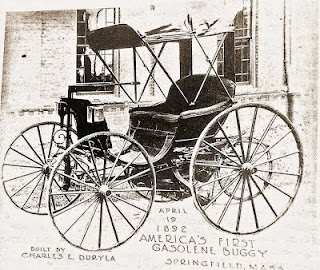
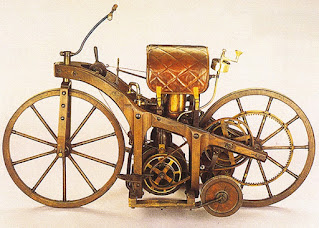


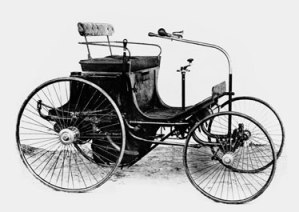



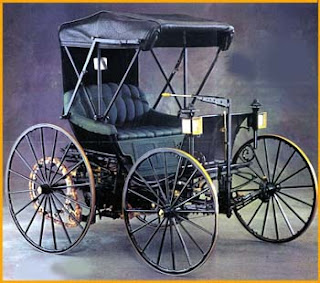
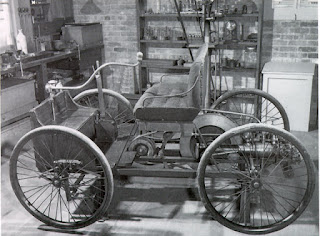
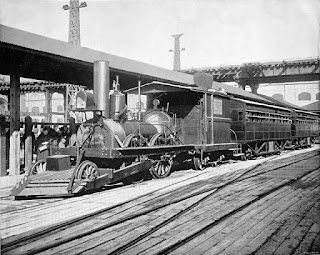
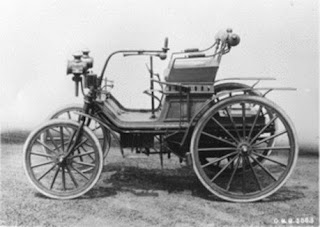


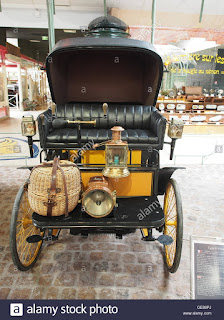
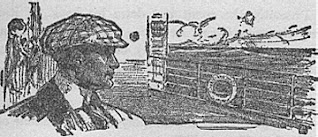



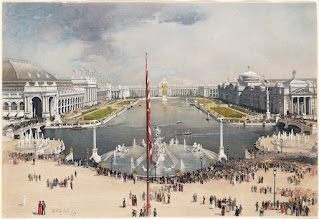





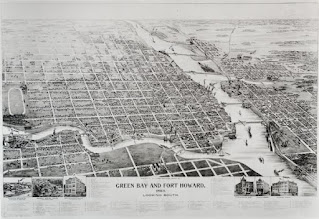
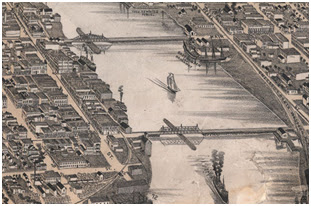





No comments:
Post a Comment